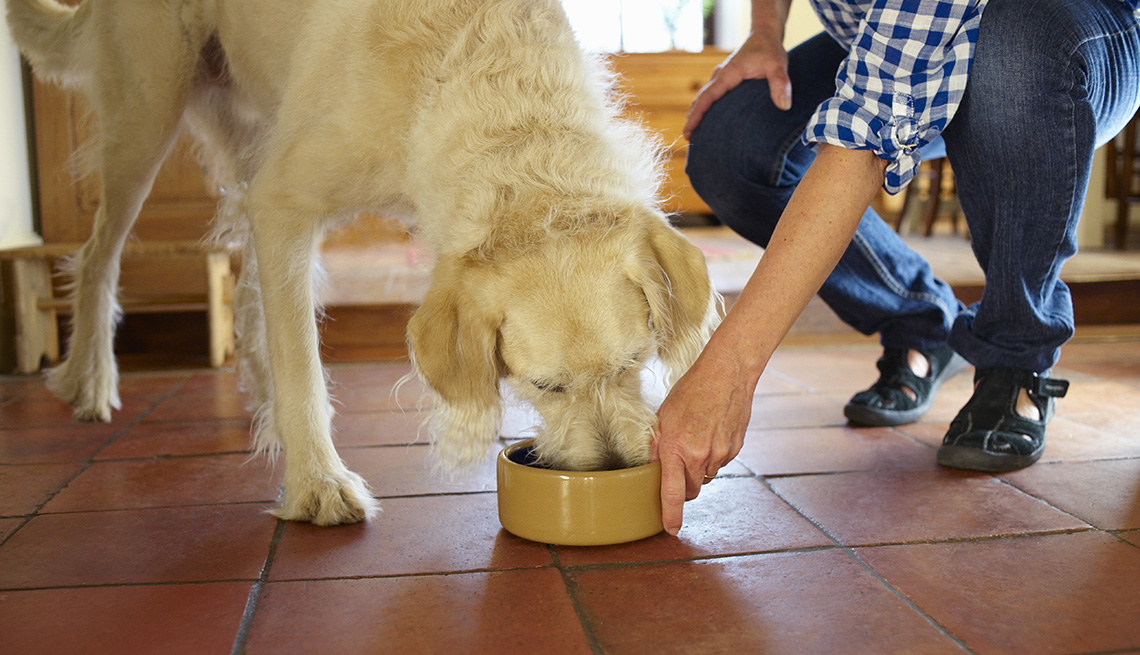Staying Fit
Kibbles for Fido? Nope. These days he's getting diced chicken with sweet potatoes and spinach.
U.S. pet owners are increasingly feeding fresh food to their dogs and cats. Some order preproportioned meals of meat and vegetables or frozen raw meat online. Others find them in refrigerators at big retailers like Walmart.


AARP Membership— $12 for your first year when you sign up for Automatic Renewal
Get instant access to members-only products and hundreds of discounts, a free second membership, and a subscription to AARP the Magazine.
Later this spring, Petco and its partner, California-based JustFoodForDogs, will open a kitchen at its flagship store in New York, where it expects to make 2,000 pounds of fresh pet food every day.
Proponents say fresh foods preserve nutrients better than canned or dried ones, mimic ancestral diets and improve pets’ health.
"Just as people have become skeptical of highly processed foods for themselves, they're looking critically at their pets' foods, as well,” said Amy Zalneraitis, part owner and chief brand officer of We Feed Raw, a 10-year-old raw-food meal-plan service based in Maine. “They think, How could something with a shelf life of over a year be better than real, fresh food?"
U.S. sales of fresh pet food in groceries and pet stores jumped 70 percent to more than $546 million between 2015 and 2018, according to Nielsen, a data company. That doesn't include online sales or people making their own fresh pet food. It's still just a fraction of the $25 billion U.S. pet food market.
But some veterinarians question the trend. They say established pet food companies, like 51-year-old Royal Canin, are backed by decades of research, but the verdict is still out on fresh food.
The U.S. Food and Drug Administration warns that raw pet food has a high risk of bacterial contamination. The agency is also investigating a link between grain-free diets that contain peas, lentils and potatoes and elevated levels of heart disease in dogs.
"There are so many essential nutrients, from all different classes, that need to be considered,” said Lindsey Bullen, a veterinarian and pet nutrition specialist at the Veterinary Specialist Hospital of the Carolinas. “If they are too high or too low, or in an inappropriate proportion, it can cause significant problems for that pet that the client might not see for months or years to come."

































































